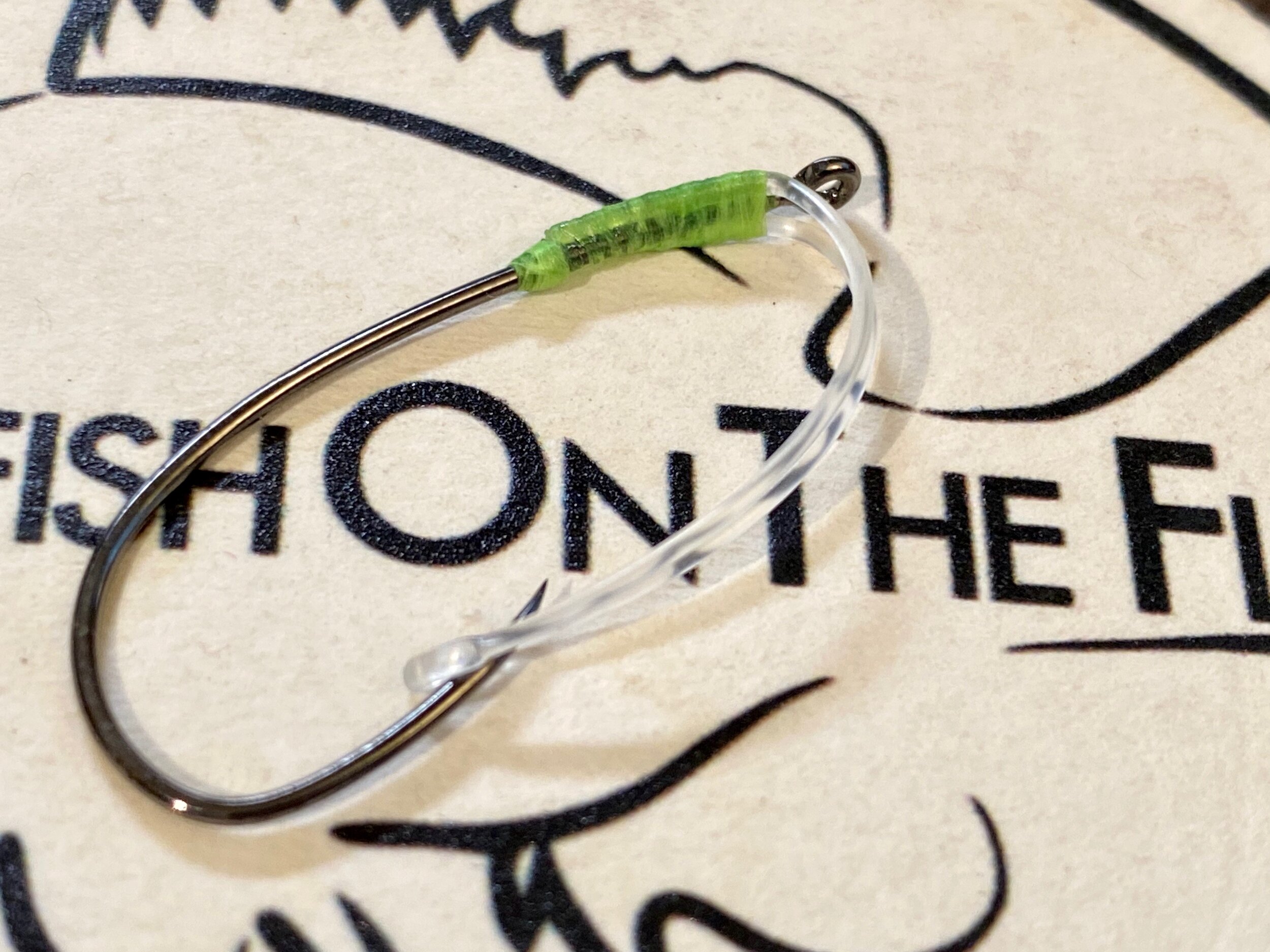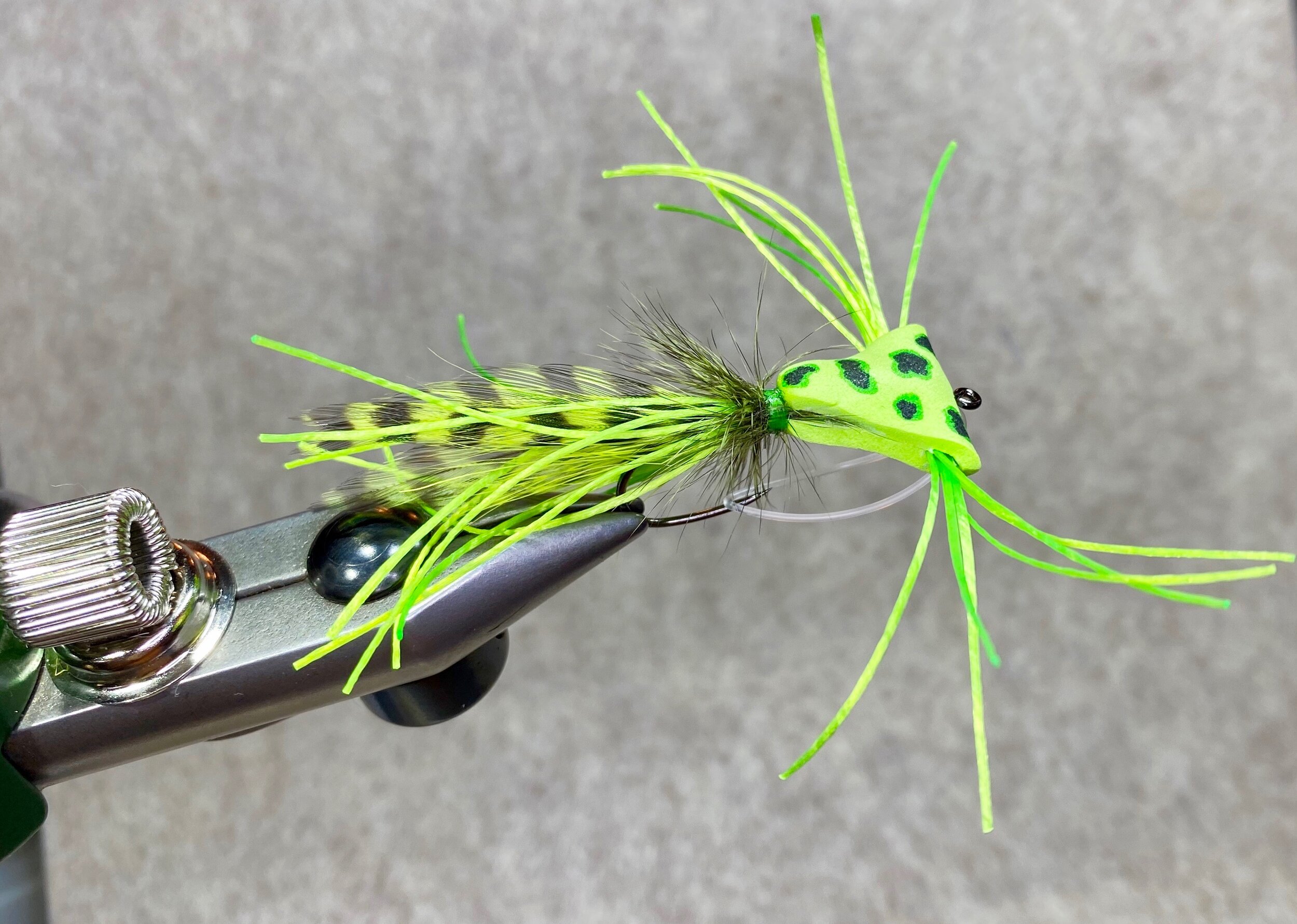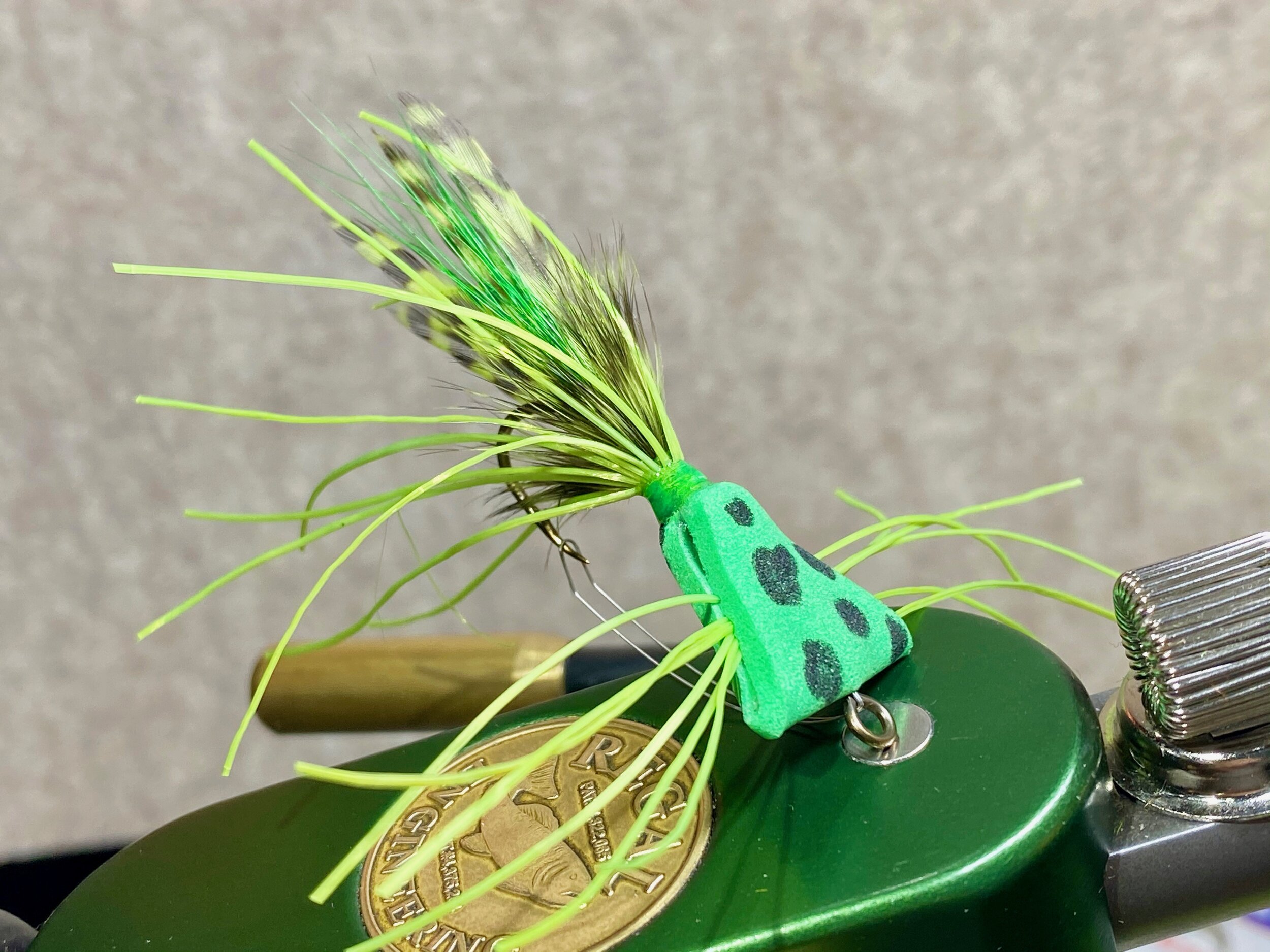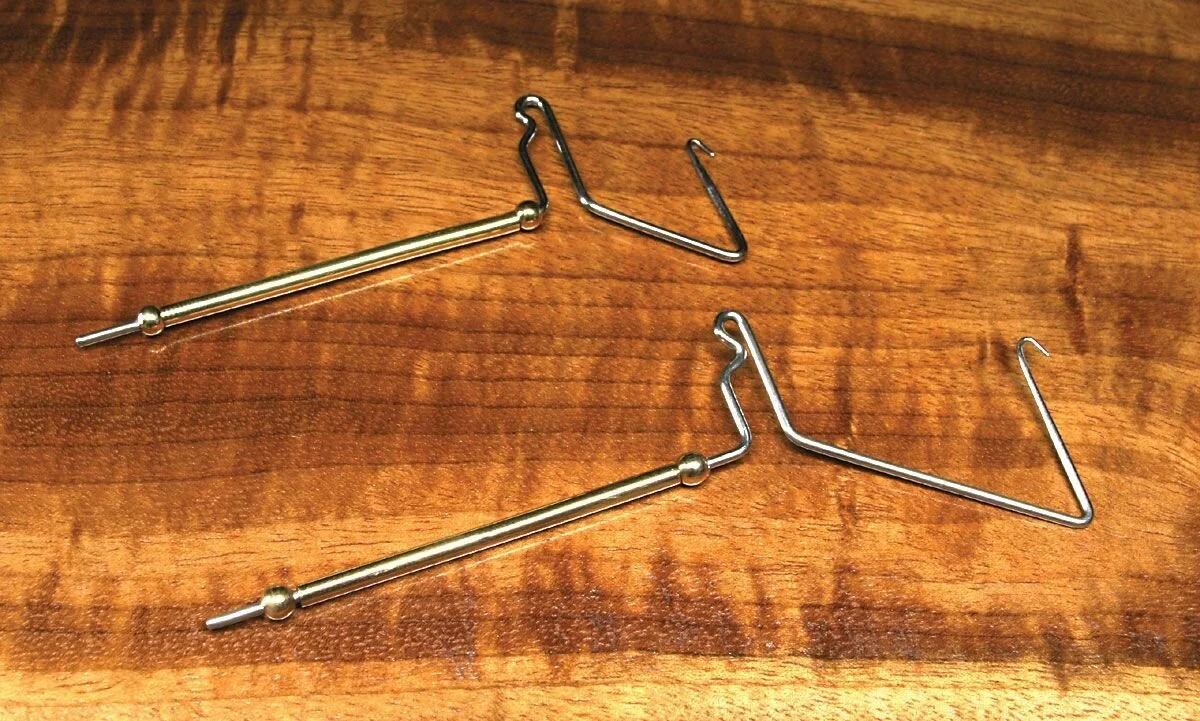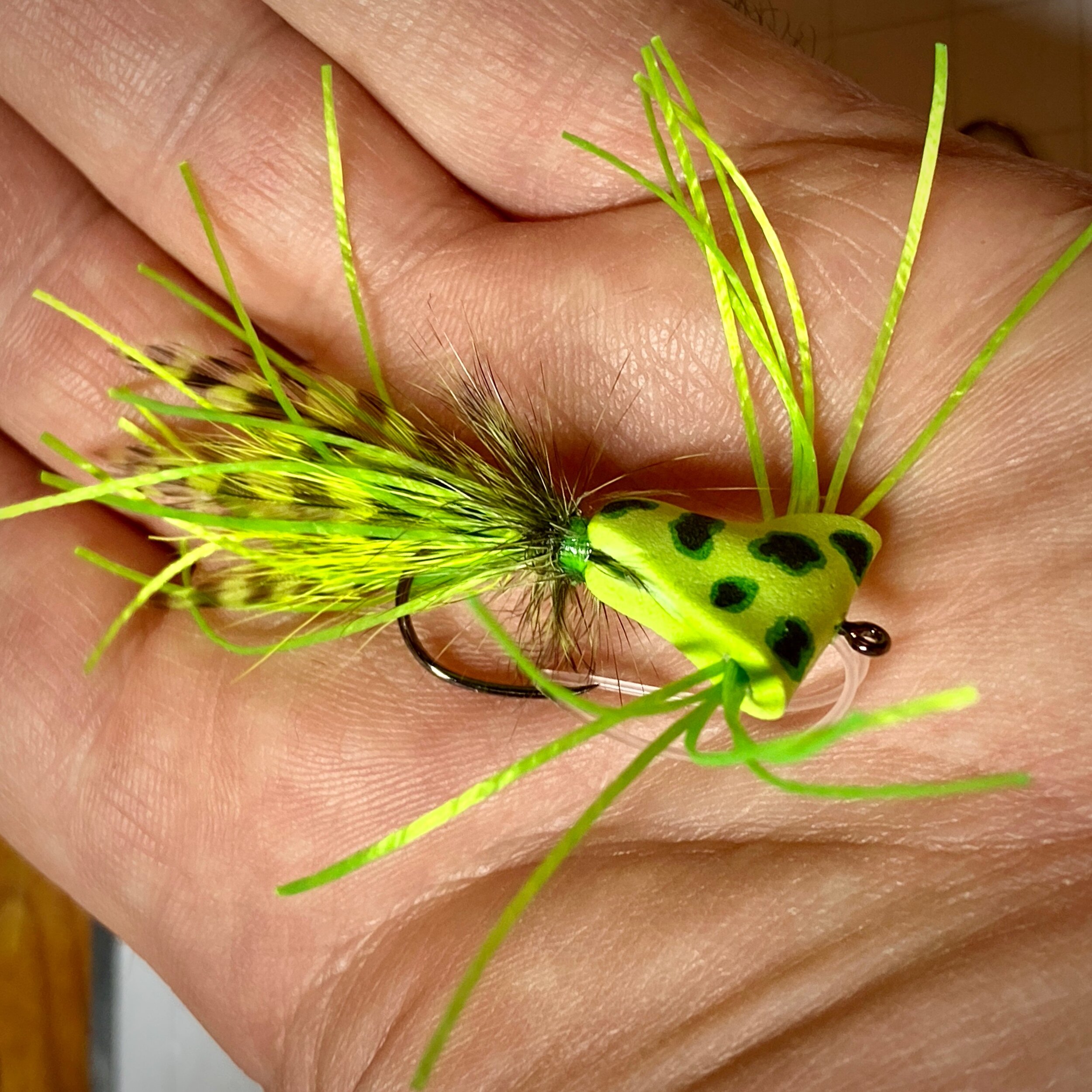I tie many of my warm water flies, particularly bass patterns, on weedless hooks. Many warm-water species often live and/or feed in areas of dense cover that will eat your flies for breakfast. Fishing weedless flies will help keep them on the end of your line where they belong! There are many ways to make your flies weedless. Weed guards on flies come in many different forms; there are loops of monofilament, stiff/short pieces of mono or wire, you can even use the material the fly is tied with to obscure the hook of the point to keep it from fouling on vegetation.
This bass-sized Triangle Bug was tied on a hook with a folded loop mono weed guard.
The Folded Loop Mono Weed Guard
A traditional mono weed guards work well, sometimes a little too well, resulting in missed fish. One of the most effective weed guards I have used goes back to the days when I used to chuck plastic worms for bass. Truth be told, when things get desperate, you can throw a worm on a fly rod. Don’t ask me how I know! Back to the plastic worms…to make a plastic worm weedless, the easiest way to accomplish that, short of burying the hook point in the worm itself, was to use a hook with a wire weed guard. They worked well and seldom interfered with the hook up of a fish. These same wire weed guard hooks can also be put into use for tying flies, and they often find their way into my patterns when I have some lying around. I feel they work better than the traditional mono loop, but they are costly.
This Triangle Bug is tied with a Mustad Weedless worm hook. It works but there are better options.
If this style of weed guard hooks work so well, why not make your own? If you have access to the proper wire, it is pretty easy to do. If finding the wire is as much of a challenge for you as it is for me, You can make a similarly designed weed guard out of monofilament. A stiff mono will work just as well, maybe better since it will not get bent out of shape like wire after hooking a fish.
A stiff monofilament like Rio’s Saltwater Butt Material is perfect for creating mono weed guards
Selecting the right monofilament is critical. I like hard mono for weed guards, and Saltwater Rio Butt Material works well for this purpose. Forty-five to fifty-pound test is about perfect for most of my bass bugs; I will go lighter for panfish flies.
The Folded Loop Mono Weed Guard works the same way as wire weedless worm hook, but will not get bent out of shape.
Start With The Right Hook
To create a fly with this style of weed guard, you need the correct hook. For this style guard to work, I prefer a hook with an upswept point. An upswept point will keep the guard in place better than a standard hook. For my topwater bugs from bass to panfish, my new favorite hook is the Firehole Outdoor model 718. This hook has a wide gap, which I feel is essential for a bass fly and a strong, upswept point. It is a barbless hook, which I prefer, but I know there are fly tiers and anglers that want a barb on their hook. Look around and I’m sure you can find a hook with similar characteristics with a barb. In addition to the model 718, a number of other Firehole Outdoors have this style of upswept points that will work well with a folded loop mono weed guard.
Making the weed guard is simple. Start by cutting a short piece of mono from the spool, three inches is perfect for a #4 Firehole Outdoor 718. Bend it half and crease the bend, so it holds its shape. I use a pair of flat jaw pliers padded with a piece of leather. You will need to play around with the length to see just how long the mono needs to be. Once you have that worked out, simply lash the butt ends down along the hook shank. Take care to do a neat job here. Each end of the mono should be neatly secured to the side of the hook. Doing this will ensure your weed guard remains straight and true. Once you are done, a good coating of superglue will hold everything in place.
Make sure the mono is securely wrapped on each side of the hook shank. Doing this properly will ensure the weed guard will work as intended.
Tying your fly maybe a little cumbersome at first because you have an inch or two of folded mono hanging off the front. Trust me, after a few flies, you will learn how to work around it, and you will not even notice it is there. An extended reach whip finisher will help with your final securing whip finish when you are done.
An Extended Reach Whip Finisher (bottom) has a longer arm that will help you whip finish at the rear of a fly like a popper or easily navigate around a folded piece of mono hanging off the front of the hook.!
When I am storing flies with this type of weed guard, I usually keep the weed guard open, so the mono does not form memory and reduce the effectiveness of the guard. If you use the right size monofilament for your guards, you will find this style of weed guard works great. It will keep your fly from snagging but will collapse easily, allowing you to hook fish. Give this style of weed guard a try on your next bass bug or popper and let me know how it works for you.
Try this style of weed guard, it just may change your opinion about weedless flies!
Did you know we now offer Gift Cards? They make a perfect gift for the hard to buy for angler or fly tier!
